How to grow an apricot from a stone?
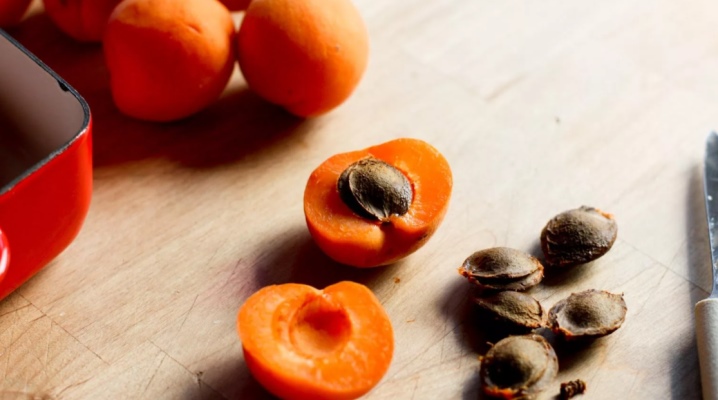
An interesting experience and observation of all stages of the growth of an apricot tree can be obtained by gardeners by growing a seedling from a stone. As in any process, it also has its own rules and sequence of actions. A tree grown in this way, according to experienced specialists, is distinguished by its resistance to diseases, unpretentiousness in care and cultivation. The plant begins to bear fruit 5-6 years after planting the seed, but only if the desired variety is inoculated on the wild stock.
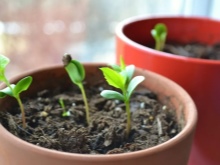
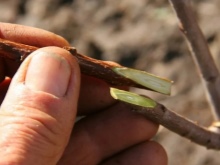

Landing dates
For planting an apricot seedling in central Russia, it is necessary to choose fruits grown in the same region, since plants have a hereditary memory and in several generations adapt to the climatic conditions of growth. Non-zoned apricot fruits may develop poorly in the future or not take root at all. To do this, you need to choose fruits from local residents at the bazaar, specifying the name of the variety. Despite the fact that it is rare to get wild game from a cultivated tree, seedlings are used as a rootstock to obtain large and tasty fruits.
Annual trees are planted in open ground in the fall, so that they have time to take root before the first frost, and the seeds are planted in a pot in the spring. If climatic conditions allow planting seeds directly into open ground, then this must be done in late autumn, since small rodents can eat them earlier. Rodent activity is noted at a low level in mid-April or October, when conditions suitable for planting apricots are created in the soil in terms of temperature and humidity.
Optimal soil conditions in mid-autumn or spring promote rapid plant adaptation.



Growing seedlings in the open field in the Moscow region is the best solution compared to waiting for seedlings to appear at home. After transplanting into open ground, young trees that are accustomed to greenhouse conditions may not survive even the first frosts, while in the garden they will become sufficiently tempered and become more frost-resistant. Summer plantings should be completely excluded, as the result is weak and not ready for winter plants. Gardeners note that with spring planting in the ground, trees of a thermophilic culture grow less hardened than with autumn.
The seeds for planting are taken from soft, overripe fruits when they are easily separated from the pulp. To do this, they can be put in a shaded place until fully ripe. In the northern regions it is recommended to plant varieties with high frost resistance, such as Favorit, Alyosha, Saratov Rubin, Northern Triumph and others. When it comes to growing seedlings at home, there may be a slight difference in the timing of planting due to the easy creation of light and thermal regimes in an apartment. In the middle zone of the Russian Federation, apricot seeds can be planted in pots in early March, and in the Urals or Siberia, it is better to move these dates to early April.


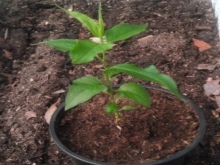
Preparation
The germination capacity of apricot kernels is not very high, so they need to be prepared in sufficient quantity. Then, even from the sprouted shoots, it is necessary to choose the strongest and most promising for further care. Before you start planting, you need to prepare not only the planting material, but also the landing site. At home, it becomes a flower pot or a planter for plants. In the open field, it is necessary to select a suitable site and carry out preparatory work on it.
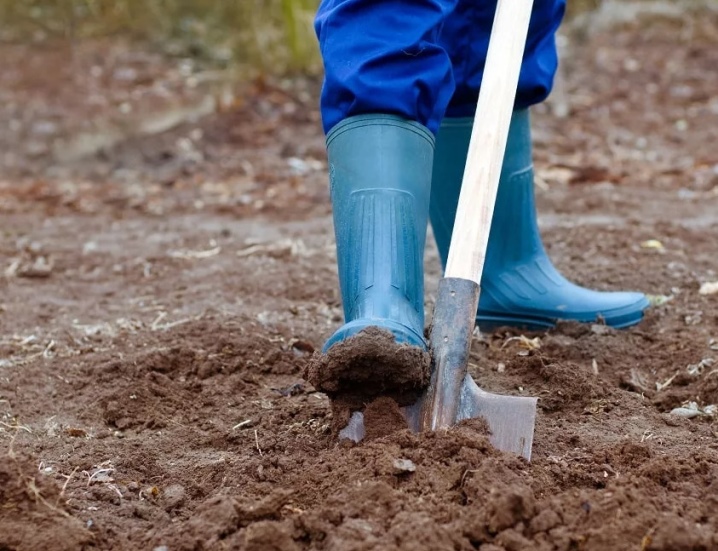
Pot
Most experts and experimental gardeners believe that growing apricot seedlings at home makes plants pampered, unsuitable for harsh winters. But when there is no way to plant the bones in the open ground and constantly take care of them, then they resort to the home method.
In winter, you need to prepare pots, which should be designed for the deep root of the tree, going down. For germination of several seeds, you can take plastic bottles with a cut off top, with a capacity of 1.5-2 liters. Small holes must be cut in the bottom of the bottles to allow excess moisture to escape. A drainage layer of expanded clay or fine gravel is placed on the bottom of the bottle, filling the space remaining to the top with fertile soil. For these purposes, you can purchase soil for home plants at a flower shop. The flowerpots are filled in the same order: with a drainage layer and universal soil. You can move the grown seedlings into them, choosing containers made of natural materials, such as ceramics, wood or stone. In just a few months, potted seedlings reach great heights.
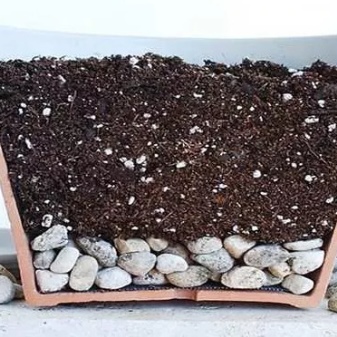
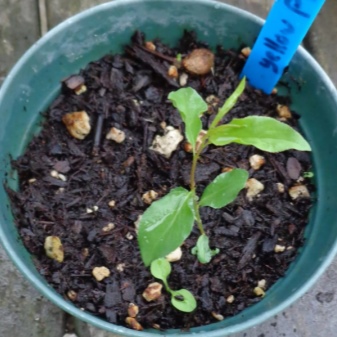
Soil
The place for planting apricot pits in the open field does not matter much, since they will still undergo further transplantation to a permanent place. To make the seeds germinate faster, you can dig a small trench, 5-6 cm deep, on the bottom of which a layer of small pebbles or rubble can be laid, then sprinkle them with a layer of sand. Put humus on top, mixed with soil chernozem, straw or hay. Seeds are placed on the prepared layer, and on top they are covered with the same layer of soil with a nutritious substrate.
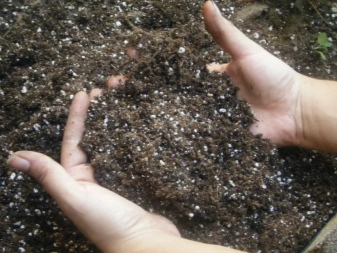

Planting material
The preparation of apricot tree seeds for autumn planting differs from their spring sowing in several nuances. The seeds, planted in open ground in the fall, undergo natural stratification in natural conditions, and at home they undergo this process artificially. If there is a cellar, the bones are placed in a box with wet sand in January and lowered into a room where the temperature is constantly maintained at a level slightly above zero degrees. It remains only to make sure that the sand does not dry out and periodically water it. In an apartment, seeds are also hardened in the lower section of the refrigerator, where they are kept in containers with moistened sand.
Before being sent for stratification, the bones are washed in water, then kept for about 20 minutes in a solution of potassium permanganate. After that, the planting material is kept in water for a week, changing the liquid daily, preventing it from acidifying. At this stage, you can immediately select empty seeds that float to the surface.
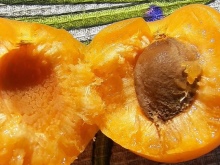
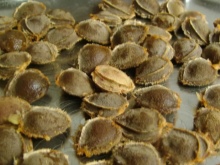
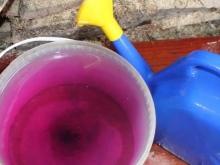
Landing technology
Local fruits of the first harvest are best suited as planting material. If the mother tree has grown successfully in a particular climatic zone, then there is more reason to expect better adaptation from its fruits after planting in the same area. Of course, every gardener will want to choose the most beautiful, tasty and large apricots for reproduction on their site. In this case, one should also pay attention to the taste of the seeds, which can be bitter or sweet. Any type of seed contains a large amount of minerals and fatty amino acids, but bitter ones contain a little more vitamin B17. It is advisable to choose a lot of seeds, as only a small percentage will rise. During hardening, some of the seed material will freeze, but the rest can germinate faster.
Planting prepared and stratified seeds at home differs little from the usual one. The soil in a prepared plastic container or pot can be universal or peaty. Before placing the bones in the ground, it must be moistened with rain or well-settled, soft water. After a 100-day period of hardening the seeds in the wet sand of the house, some of the seeds are germinated. The seeds with small sprouts are placed in soft soil and sprinkled on top with a small layer of the same fertile soil.
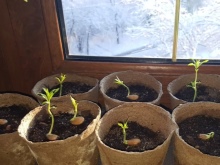
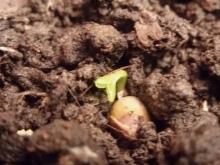
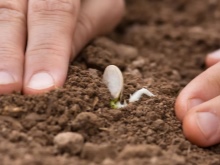
In order to properly plant the seeds of the fruits of apricot trees in open ground, it is necessary to carefully dig up the soil, remove weeds, create a deepened trench and lay a drainage layer in it, covering it with black soil with humus on top. On top of it, you can spread the seeds at a distance of 10 cm from each other, and then sprinkle with a layer of the same soil, 3-4 cm thick in the spring and 5-6 cm in the fall. After planting, the trench must be watered, creating favorable conditions for the germination of apricot seeds. In the spring, the landing site will have to be closed from bird attacks with film or nets. In the fall, the trench is covered with sawdust or pine needles from freezing.
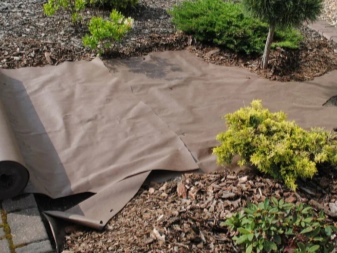

Follow-up care
Competent and timely care of the sprout from the first days of its appearance will be the key to growing a powerful and healthy tree, which regularly brings abundant and high-quality harvests of apricots. The tender young seedling becomes an easy prey for rodents, birds, harmful insects and diseases. A simple protection from a plastic water bottle cut off on both sides will help to cope with mechanical attacks, which will reliably cover a small escape from animal attacks and at the same time will not block it from sunlight. Protected in this way, small seedlings grow at rest and are replenished with nutrients from the fertilized soil.
With regard to watering, apricots have some peculiarities. Insufficient soil moisture is dangerous for young plants, as they can dry out without having roots long enough to reach groundwater.
Over-watering is also undesirable for apricot trees, as they come from warm, arid regions.
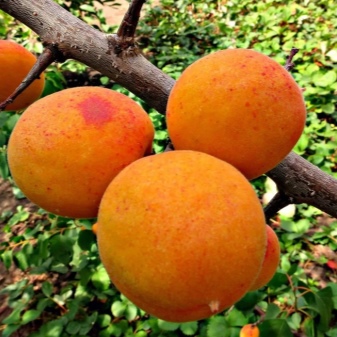
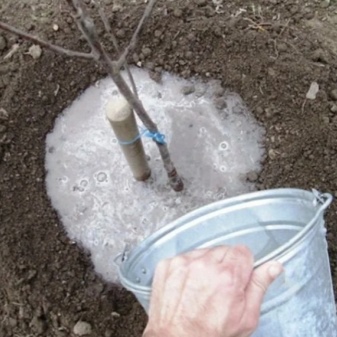
Under natural conditions, wild apricots often grow in mountainous areas, receiving water from the ground, and calcium from rocky deposits. Therefore, they can be mulched with lime chips mixed with peat, humus or sawdust. In the hot season, especially at the beginning of the season, trees are watered 1-2 times a week. The amount of watering can be reduced by mulching the near-stem zone. In this case, in moderate weather conditions, you can abundantly moisturize the seedlings only 2-3 times a month.
The most favorable time for watering during the day is in the morning hours - from 7 to 10 hours, or in the evening - from 19 to 21 hours. In order to grow an apricot from a stone in the northern regions of the country, watering of seedlings is completely stopped from mid-July. This is due to the fact that without excessive moisture, young plants will quickly become covered with dense tree bark and will meet winter frosts more protected from the cold. In addition to general recommendations, for each area it is necessary to find its own golden mean of the volume and timing of irrigation. On sunny and hot days, do not water the tree from 11 am to 5 pm.
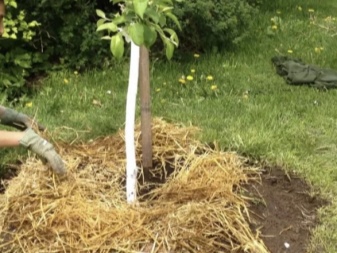
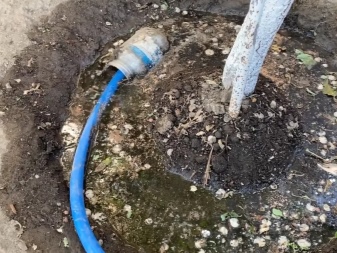
To obtain varietal fruits, young seedlings obtained from seeds must be grafted with cuttings of cultivated trees. If a tree grows from a seed immediately at a permanent planting site, then it will begin to bring its first harvests 5-6 years after sowing. If the seedlings were transplanted, then the first fruits will appear on them a couple of years later.
As an effective preventive measure to protect young trees from diseases and pests, gardeners use whitewashing of trunks. This procedure is usually carried out in late autumn or early spring. Apricot seedlings rarely infest pests such as moth, caterpillars, aphids, or leafworms.So that the plants do not get sick, and they have fruits, they can be sprayed with solutions of ash, laundry soap with tobacco infusion or lime with copper sulfate. In the initial period of growth of seedlings, while they do not bear fruit, they can be treated with chemicals if pest infestation becomes widespread.
When attacked by caterpillars, young trees, the leaves of which can be completely eaten by voracious insects, are sprayed with chlorophos solution, and treatment with Actellik helps from aphids.
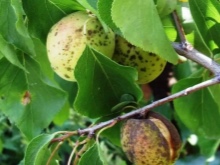
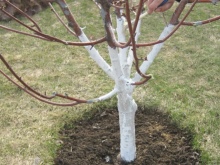
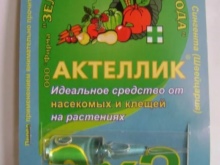
Top dressing of apricot seedlings begins from the second year of the tree's life. It is held in the spring and summer. The time interval between the application of various fertilizers should be about 2 weeks. At the same time, organic and complex mineral dressings alternate. In the spring, the roots of the plant should receive peat, ash, calcium in the form of eggshell powder, urea, saltpeter and sawdust mixed in half with sand. Among summer fertilizers, the most suitable are rotted animal manure and bird droppings mixed with infusions of herbs - nettle, dandelion and others.
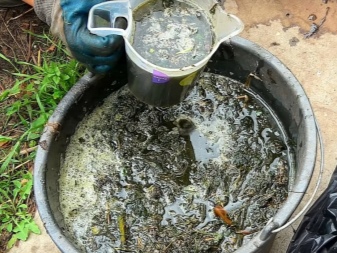
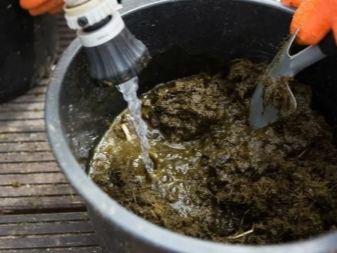
To create the shape of a fruiting apricot in the form of a low, spreading trunk, a shaping shearing of the seedlings is performed starting from the 2nd year after the seed has germinated. All types of pruning are done in early spring, when after wintering, twigs frozen from frost and dried tips of shoots appear on the plants. Subsequently, the trees are always trimmed at approximately the same time. In grown trees, individual shoots that are too long and go beyond the general contour are shortened, thickening the crown.
New seedlings of apricot trees, entering their first winters after sprouting from the seeds, can not only freeze, but also break under the weight of the snow masses. Delicate and fragile shoots for the winter can be reliably protected from damage with large plastic bottles by cutting off their bottom and neck. And also help the autumn processing with a solution of lime, wrapping the trunks with sacking and sprinkling with dry hay, straw or fallen leaves.
With heavy snowfall in winter, it can be additionally thrown around young trees to protect the root system from freezing.

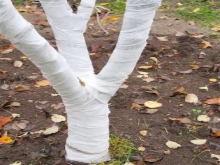
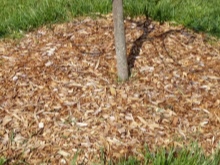
How to transplant?
Young seedlings of apricots grown from seeds require frequent replanting. At home, a small tree is transplanted at least once a year, and a growing one - once every 4 years. Each time, the diameter of the pot or the perimeter of the tub should increase by 10 cm. Young thermophilic plants grown in greenhouse conditions will almost certainly die if they are planted in the country in the open ground after several years of being kept in the house. They can only survive in specially equipped winter gardens or in southern regions with milder climates.
Saplings, immediately grown from seeds in the garden, must eventually be transplanted to a new, permanent place. It can be on a hill or in a lowland, but the main thing is that for the apricot to survive and produce a crop, it must grow in a well-sunlit area. And also trees do not tolerate wetlands and heavy clay soil with an increased acid reaction.
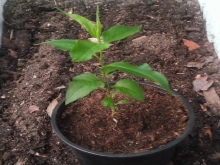
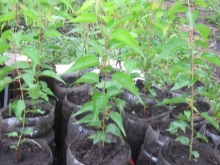
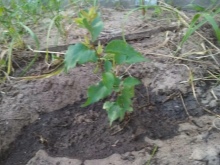
Step-by-step instructions for transplanting apricot seedlings differ little from the usual planting of other horticultural crops. Having chosen a place suitable for the tree, you need to dig a hole 50x60 cm and fill the bottom with a fertile mixture consisting of black soil, humus, collected herbs, leaves and other organic waste. The soft litter should be sprinkled with earth, and then the seedling should be immersed in the hole, spreading the roots and filling the rest of the soil to the root collar on the tree trunk. The root zone can be sprinkled with sawdust or hay so that the tree does not dry out in the summer. Watering is necessary once every 2 weeks at moderate average temperatures.
The hard and patient work of growing an apricot tree from seed will be rewarded with generous yields of delicious fruits. Most frost-resistant varieties fully develop and bear fruit in areas with a wide variety of climatic conditions.
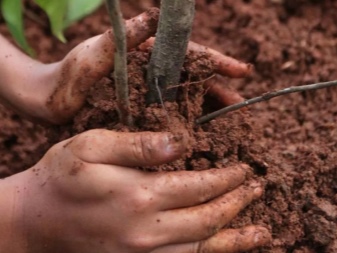
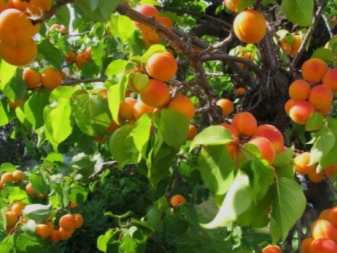
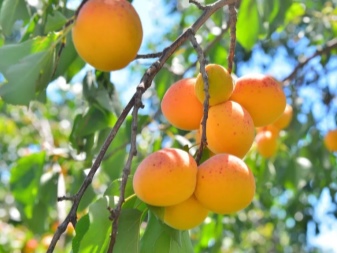
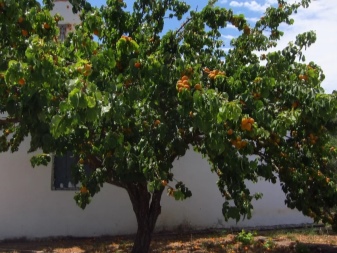









The comment was sent successfully.